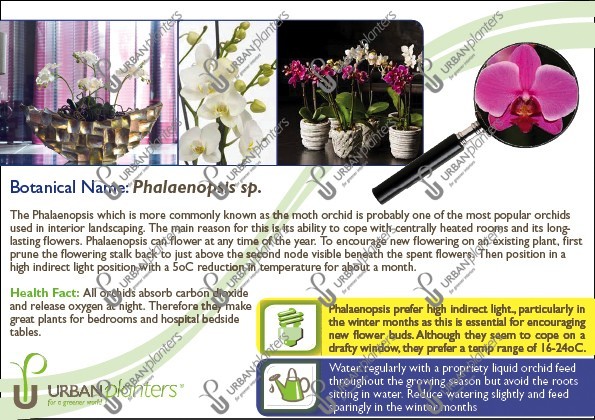
The Phalaenopsis which is more commonly known as the moth orchid is probably one of The main reason for this is its ability to cope with centrally heated rooms and its long-lasting flowers. Phalaenopsis can flower at any time of the year. To encourage new flowering on an existing plant, first prune the flowering stalk back to just above the second node visible beneath the spent flowers. Then position in a high indirect light position with a 5 oC reduction in temperature for about a month.
Health Facts: All orchids absorb carbon dioxide and release oxygen at night. Therefore they make great plants for bedrooms and hospital bedside tables.
Environment: Phalaenopsis prefer high indirect light., particularly in the winter months as this is essential for encouraging new flower buds. Although they seem to cope on a drafty windowsill, they do prefer a temperature range of between 16 – 24 oC.
Plant Care: Water regularly with a propriety liquid orchid feed throughout the growing season but avoid the roots sitting in water. Reduce watering slightly and feed sparingly in the winter months.
